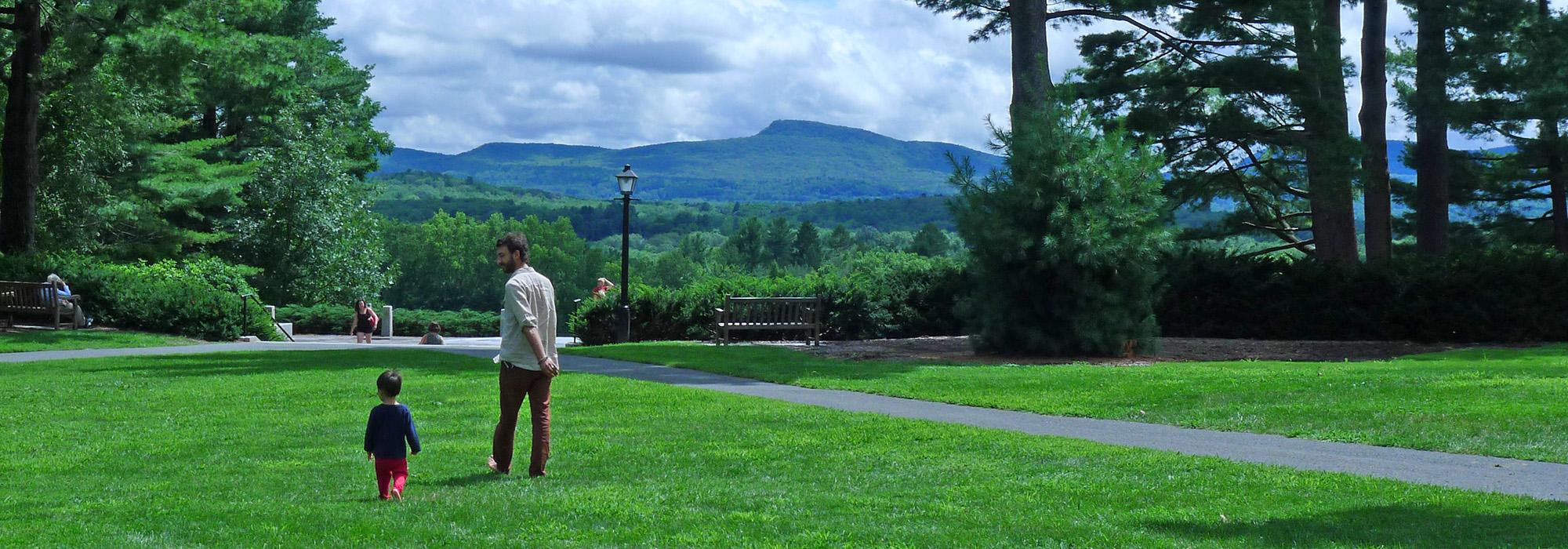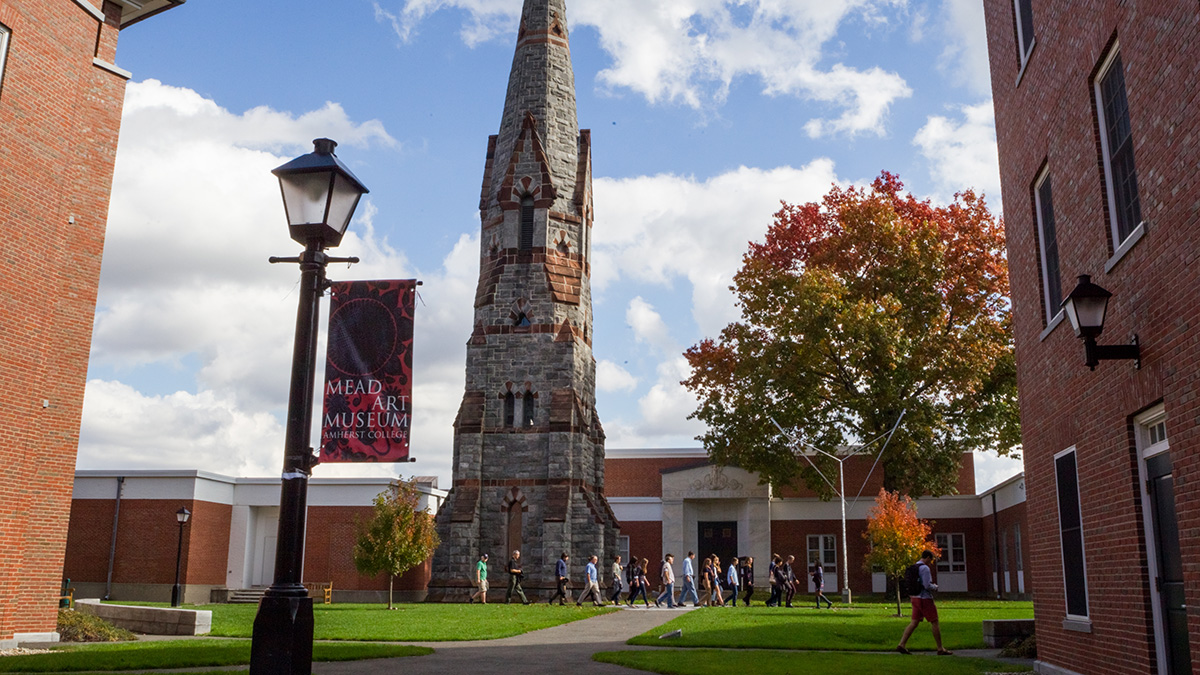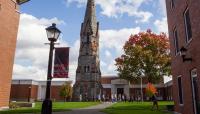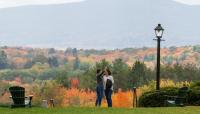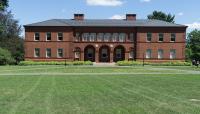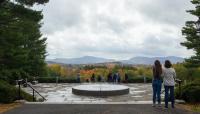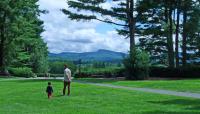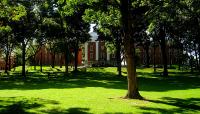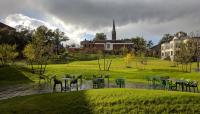Landscape Information
Founded in 1821 and built on land owned by poet Emily Dickinson’s grandfather, the college was first established for men before becoming co-educational in 1975. The original campus consisted of three buildings situated on a prominent hill with panoramic views out over the surrounding landscape, bounded by Pleasant Street (west), College Drive (north), and with a railway and fields to the south and east, respectively. The grade involves a 100-foot drop to the west and a thirty- to forty-foot drop north to College Street. On a perpendicular axis to College Street was Walker Hall, with steps down the hill and a circular drive at the base.
Campus development involved multiple generations of the Olmsted firm Frederick Law Olmsted, Sr., recommended an internal campus concentrated in the valley between two hills. In the 1890s, John Charles Olmsted, aided by Herbert Kellaway, evaluated the grading plans. During a collaboration between John Charles Olmsted and the architecture firm McKim, Mead, and White on the location for a new science building, the need for an overall campus plan resurfaced. By 1906 the trustees of the college had created the Commission for Improvements to Amherst College and appointed architects Charles McKim, William Mead, Daniel Burnham, sculptor Augustus Saint-Gaudens, and Olmsted, Jr., all of whom had been involved in the Chicago 1893 Exposition planning.
The Commission was directed to prepare a general plan, site new buildings, and beautify the grounds. A 1906 report by Mead and Olmsted, Jr., makes recommendations for land acquisition and reiterates Olmsted, Sr.’s, ideas concerning building locations. In 1916 the university’s trustees agreed to continue to honor the general plan. The plan was overseen by an honorary commission, on which Olmsted, Jr., and Edward Whiting served until 1925.
The campus today measures 1,000 acres and retains much of Olmsted, Sr.’s, original concept—a campus with an internal series of nested quads to best take advantage of the site.



